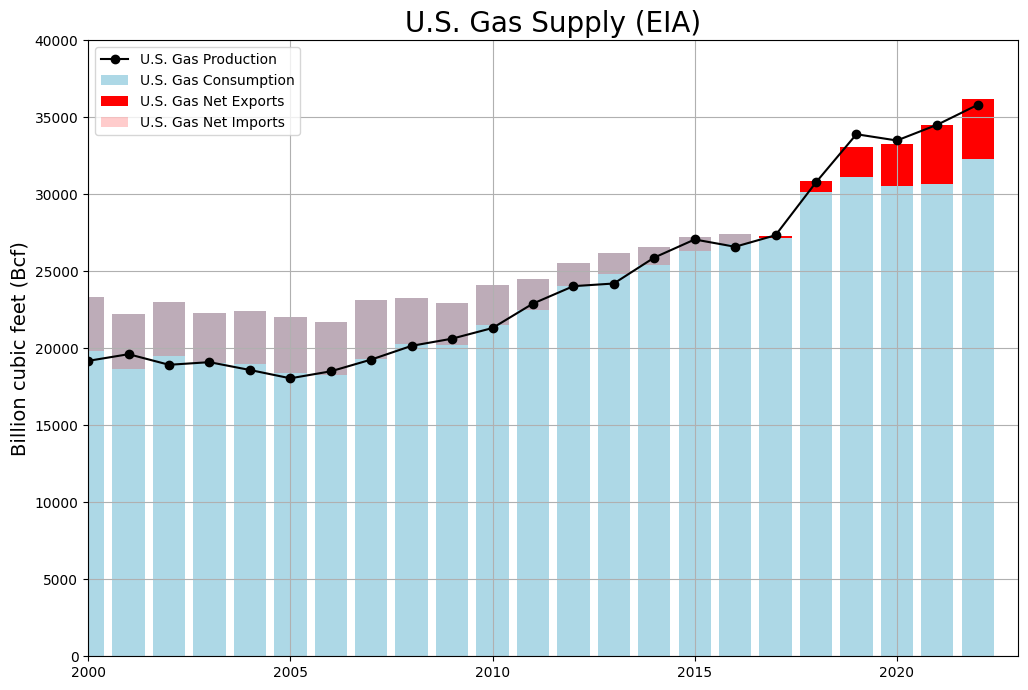Thanks to the fracking revolution that began over a decade ago, the U.S. has become the world’s largest methane gas producer.
Methane or fossil gas (usually called “natural” gas in the U.S.) is a fossil fuel that is used to generate electrical power, heat buildings, and power heavy industry. Thanks to the fracking revolution that began over a decade ago, the U.S. has become the world’s largest methane gas producer. Since 2017, the U.S. has shifted from importing gas to producing more gas than it consumes, and is now exporting the surplus to other countries.

Methane gas is most easily transported by pipeline, and as a result the U.S. trades a lot of gas by pipeline to both Canada and Mexico. But increasingly, the surplus gas we extract is being turned into Liquefied Natural Gas (LNG), loaded onto specialized tankers, and shipped around the world. Chilling methane gas to a temperature of negative 260°F turns it into a liquid with a volume 600 times smaller. This makes it possible to transport LNG by ship. The gas must then be kept in this super-chilled form for the entire ocean voyage until it reaches its destination where it is turned back into gaseous form, or “regasified.”
Each stage of this complex process is extremely energy intensive, and as a result, LNG has very high lifecycle greenhouse gas emissions – almost as bad as coal. Gas is transformed into LNG at export terminals, mostly located along the U.S. Gulf Coast, using complex equipment known as “liquefaction trains.” The first shipment of U.S. LNG occurred in 2016, and since then exports have increased as fast as the industry can build export capacity. The U.S. is now the world’s largest LNG exporter.

U.S. LNG exports are primarily shipped to Asia and Europe. Top importing countries include South Korea, China, Japan, India, Spain, United Kingdom, Netherlands, and France. In 2022, following Russia’s invasion of Ukraine, LNG shipments to Europe surged, as we discuss in our recent report. (To read Greenpeace International’s report on shipments of U.S. LNG to Europe, click here.)
The process of extracting oil and gas, commonly known as fracking, also leads to local air and water pollution that can harm nearby communities. For this and other reasons, fracking is banned in many European countries, including several that import LNG from fracked gas. The public health harms of gas production disproportionately fall on Black, Brown, Indigenous and poor communities.
Numerous new export terminals are under construction or in the planning stage. If built, these terminals would facilitate a big increase in LNG exports over the next few decades and put our climate goals at risk.
(Return to LNG 101 main page)
